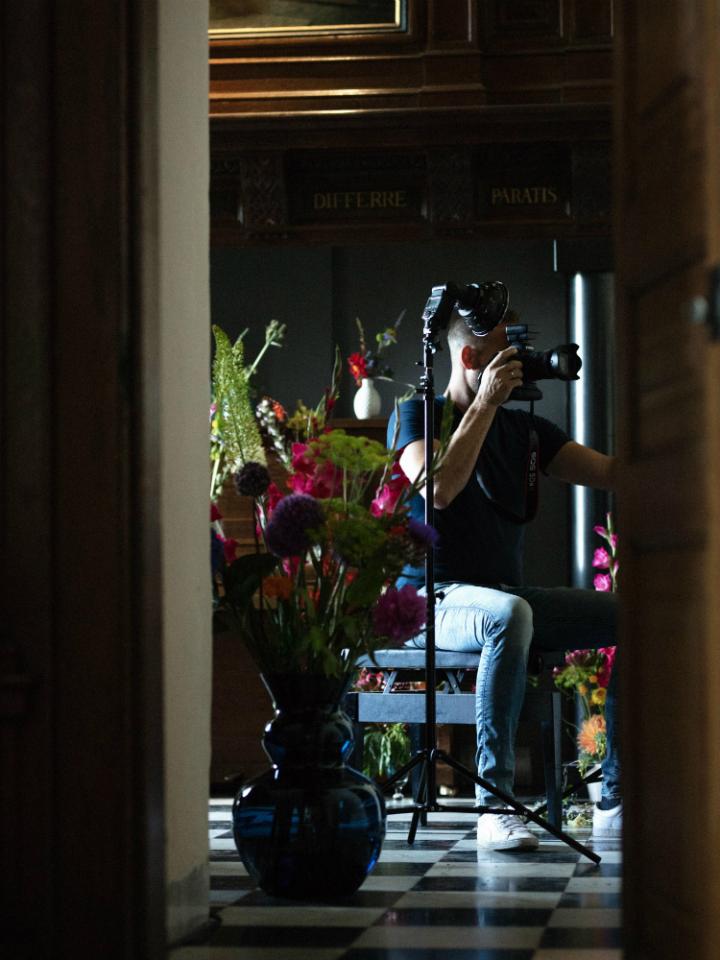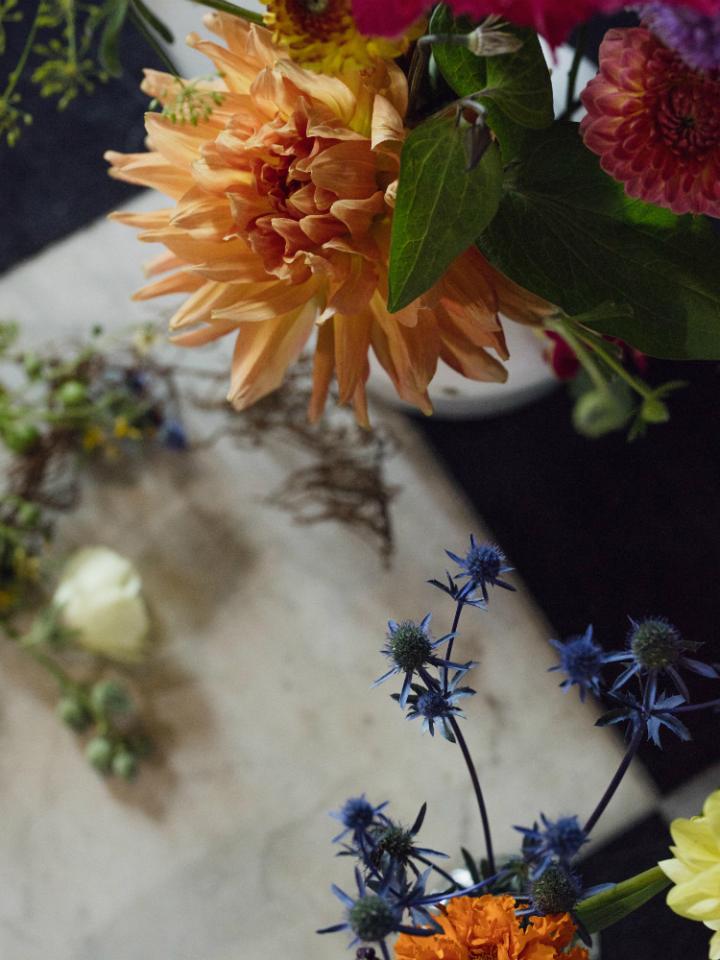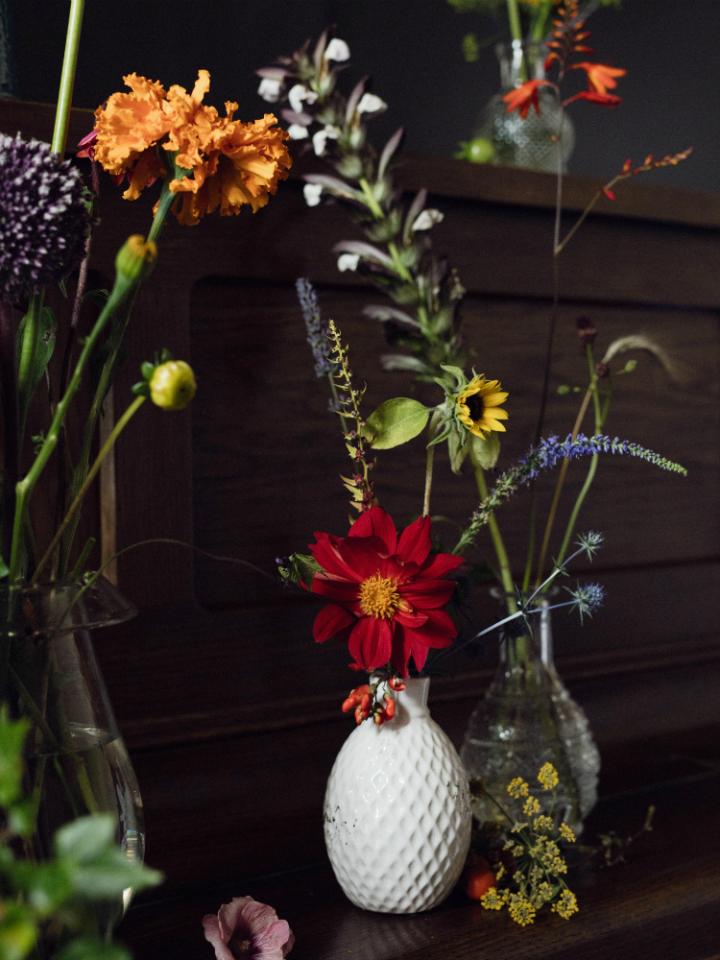Playing with proportion, colours and shadow
‘I photograph individual flowers at various stages of flowering throughout the year, and afterwards I can use them to create a digitally composed flower still life at any time. That allows spring flowers to be combined with flowers from the autumn or with berries. That means a flower can appear in the same bouquet in the form of both blossom and fruit, for example. And I can play with proportions, change colours and modify shadows. That’s something you can’t do when you first create a flower arrangement and then photograph it - it gets tricky. Effectively you can adapt everything to produce a perfect image.’
Creating still lifes at home
‘I always gave my mother flowers for her birthday and for Mother’s Day. I thought they were lovely even then, so I already had a love for flowers. At home we didn’t do much with flowers, but we did do a lot of photography. Based on that passion - I’m self-taught - the floral work finally got added in. I started taking photographs at home. That was for practical reasons, since I was working as a physiotherapist and had small children. Because of the limited time available, I want to do more photography at home. So I started creating still lifes, lighting them and photographing them.’
‘That allows spring flowers to be combined with flowers from the autumn or with berries.’
Tulips, anemones and red roses
‘The florist near me had very beautiful French tulips, anemones and red roses on offer, and I photographed them separately. I did that with quite hard lighting, to get a beautiful dramatic effect. Then I sat down at my computer and got to work with Photoshop. That certainly was an eye-opener. I saw those close-ups with that texture, and I was truly captivated.’

Anything is possible in art
‘I always photograph loose flowers, because I want to make slightly unusual creations. That really was the intention from the start. If you look at the old still lifes from the seventeenth century, that’s also largely what they did. They weren’t painted true to life - the lighting and the composition aren’t right. If you look at them as a biologist you think “Surely that’s not possible?” But anything’s possible in art, isn’t it?’
Experiencing the beauty of nature
‘If you look at those paintings, they really are symbols of extravagant wealth. Imagine what people felt when they looked at a painting like that! Around them were grass and daisies, not the abundant richness of tulips. I try to translate the way that people from that time experienced beauty into the present day. I want people to rediscover that beauty and that magnificence again, and not take flowers and nature for granted. Just look at what loveliness we have around us.’
‘I’m coming here once a fortnight for a year in order to pick flowers, plants and fruit that I photograph in a turret room.’

Muiderslot and the gardens
‘I’ve been commissioned by Muiderslot Castle to produce a work to mark the 20th anniversary of the restored gardens. I’m doing that with materials from the castle gardens. So I’m coming here once a fortnight for a year in order to pick flowers, plants and fruit that I photograph in a turret room. The still life will also feature Maria Tesselschade's slipper and wedding ring. She lost them here. They’ve recently been rediscovered, and I’ve photographed them. That way you have all sorts of references to Muiderslot, the Muiden Circle of artists and scientists, and the past.’
Turkish tulips
‘I don’t have a single favourite flower - there are several. One my favourites is the tulip. I also think dahlias are really cool, almost mathematical flowers. And I find crown imperials very beautiful - truly magnificent creations. A flower that often recurs in my work is a Turkish tulip, one of the very pointy ones, because you can do a lot with them for technical photographic reasons. I look for particular shapes in flowers that my lighting makes very interesting.’

Bouquets of extinct flowers
‘Alongside the Muiderslot project I recently went to take photographs in Bangalore, India. The Hortus Botanicus in Leiden and other botanical gardens are participating in a project to help preserve plant species that are becoming extinct. My idea is to create a series of works with plants which have become (almost) extinct in the wild and then make an apparently utterly normal bouquet with them, but one that’s on the edge of extinction.’
Seeking that one flower
‘I think I now have more than 10,000 different photos of flowers. I haven’t categorised them. Sometimes I’m looking for a very small white flower that I know had a curl in it, and I think: “That was somewhere at the start of this project”. I’m currently experimenting with different backgrounds, and working on more surrealist floral arrangements. And then I do have to hunt for that one flower until I find it. Sometimes I come across surprises on the way: “Gosh, I’ve got that flower as well!” and “Wow, I must do something with that.” That then inspires me to make something that I look at and think “That’s amazing, I want to hang that on the wall”.’
Want to find out more? Watch the video with Bas Meeuws here.






